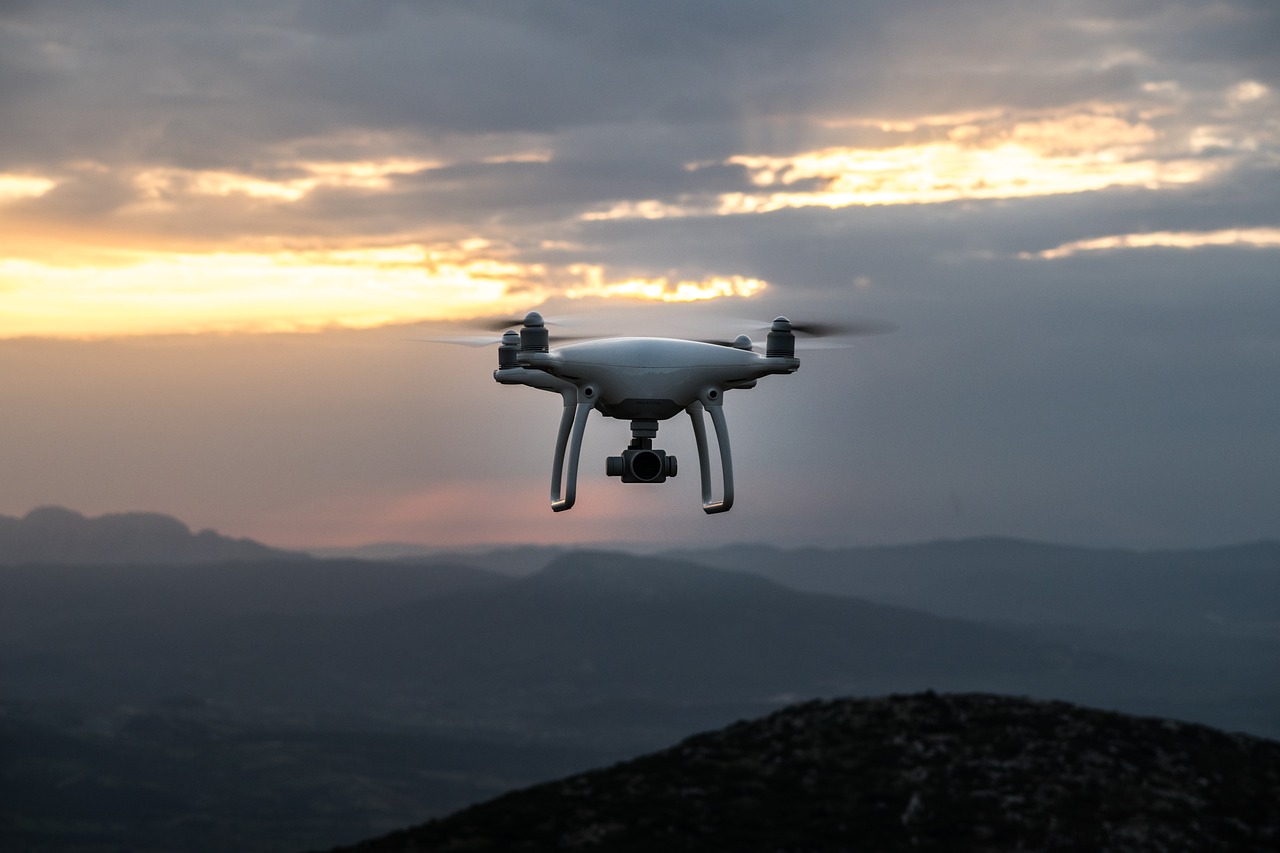A catalogue of genetic mutations to help pinpoint the cause of diseases
Mobile Robotics – Increasing Flexibility Enables Increasing Efficiency in Logistics
Virtual-reality tech is fast becoming more real

Virtual-reality technology could help cure people of phobias including about spiders. © Leena Robinson, Shutterstock.com
By Helen Massy-Beresford
Imagine a single technology that could help a robot perform safety checks at a nuclear plant, cure a person’s arachnophobia and simulate the feeling of a hug from a distant relative.
Welcome to the world of “extended reality”. Researchers funded by the EU have sought to demonstrate its enormous potential.
Relevant research
Their goal was to make augmented reality, in which the real world is digitally enhanced, and virtual reality – a fully computer-generated environment – more immersive for users.
One of the researchers, Erik Hernandez Jimenez, never imagined the immediate relevance of a project that he led when it started in mid-2019. Within a year, the Covid-19 pandemic had triggered countless lockdowns that left people working and socialising through video connections from home.
‘We thought about how to apply this technology, how to feel human touch even at a distance, when we were all locked at home and contact with others was through a computer,’ said Hernandez Jimenez.
He coordinated the EU research initiative, which was named TACTILITY and ran from July 2019 until the end of September 2022.
The TACTILITY team developed a glove that simulates the sense of touch. Users have the sensation of touching virtual objects through electrical pulses delivered by electrodes embedded in the glove.
The sensations range from pushing a button and feeling pressure on the finger to handling a solid object and feeling its shape, dimensions and texture.
Glove and suit
‘TACTILITY is about including tactile feedback in a virtual-reality scenario,’ said Hernandez Jimenez, who is a project manager at Spanish research institute TECNALIA.
He said the principle could be extended from the glove to a whole body suit.
Compared with past attempts to simulate touch sensations with motors, the electro-tactile feedback technique produces a more realistic result at a lower cost, according to Hernandez Jimenez.
This opens up the possibility of making the technology more widely accessible.
The research bolsters European Commission efforts to develop the virtual-worlds domain, which could provide 860 000 new jobs in Europe this decade as the worldwide sector grows from €27 billion in 2022.
The EU has around 3 700 companies, research organisations and governmental bodies that operate in this sphere, according to the Commission.
Phobias to factories
The TACTILITY researchers looked at potential healthcare applications.
“We thought about how to apply this technology, how to feel human touch even at a distance.”
– Erik Hernandez Jimenez, TACTILITY
That’s where spiders come into the picture. They were among the objects in the project’s experiments to mimic touch.
‘One that was quite impressive – although I didn’t like it at all – was feeling a spider or a cockroach crawling over your hand,’ Hernandez Jimenez said.
A potential use for the technology is treating phobias through exposure therapy in which patients are gradually desensitised to the source of their fear. That could start by virtually “touching” cartoon-like creepy crawlies before progressing to more lifelike versions.
The tactile glove can also be used in the manufacturing industry, helping the likes of car manufacturers train their workers to perform tricky manoeuvres on the factory floor.
Furthermore, it can help people collaborate more effectively with remotely controlled robots in hazardous environments. An example is a nuclear power plant, where a person in a control room can virtually “feel” what a robot is touching.
‘They get another sense and another kind of feedback, with more information to perform better checks,’ Hernandez Jimenez said.
Joyful and playful

Wearables for virtual reality. © Oğuz ‘Oz’ Buruk, 2021
Wearable technologies for virtual-reality environments are also being inspired by the gaming industry.
Researchers in a second EU-funded project sought to expand the prospects for technologies already widely used for professional purposes. The initiative, called WEARTUAL, ran from May 2019 until late 2021.
“Wearables are fashion items – they’re part of the way we construct our identity.”
– Oğuz ‘Oz’ Buruk, WEARTUAL
‘Our project focused on the more experiential side – joyful and playful activities,’ said Oğuz ‘Oz’ Buruk, who coordinated WEARTUAL and is assistant professor of gameful experience at Tampere University in Finland.
Until recently, experiencing a virtual-reality environment involved a hand-held controller or head-mounted display.
The WEARTUAL researchers looked at ways of incorporating wearables worn, for example, on the wrist or ankle into virtual reality to give people a sense of greater immersion.
That could mean having their avatar – a representative icon or figure in the virtual world – blush when nervous or excited to enhance their ability to express themselves.
On the cusp
The team developed a prototype that could integrate varying physical sensations into the virtual world by transferring to it real-life data such as heart rate.
Buruk is interested in how games will look in the “posthuman” era, when people and machines increasingly converge through bodily implants, robotics and direct communication between the human brain and computers.
He signals that it’s hard to overestimate the eventual impact of advances in this area on everyday life, albeit over varying timescales: wearables are likely to be much more widely used in virtual reality in the next decade, while widespread use of bodily implants is more likely to take 50 to 100 years.
As technology and human bodies become ever more closely linked, the experience of transferring them to a virtual world will be enhanced, encouraging people to spend increasing amounts of time there, according to Buruk.
Virtual-reality technologies are already being used for practical purposes such as gamifying vital information including fire-safety procedures, making it more interactive and easier to learn. This type of use could expand to many areas.
On a very different front, several fashion houses already sell clothes that can be worn in virtual environments, allowing people to express their identity and creativity.
‘Wearables are fashion items – they’re part of the way we construct our identity,’ Buruk said. ‘Investments in virtual reality, extended reality and augmented reality are increasing every day.’
Research in this article was funded by the EU via the Marie Skłodowska-Curie Actions (MSCA).
This article was originally published in Horizon, the EU Research and Innovation magazine.
Researcher team develops soft valve technology to enable sensing and control integration in soft robots
Knightscope Building on Results to Deliver New Solutions for Parking and Public Safety on AWS
Using tiny combustion engines to power very tiny robots
How do robots collaborate to achieve consensus?
Why Rotary Encoders Might Be the Best Fit for Your Industrial Robotics Design
High-tech microscope with ML software for detecting malaria in returning travellers

By Deborah Pirchner
Malaria is an infectious disease claiming more than half a million lives each year. Because traditional diagnosis takes expertise and the workload is high, an international team of researchers investigated if diagnosis using a new system combining an automatic scanning microscope and AI is feasible in clinical settings. They found that the system identified malaria parasites almost as accurately as experts staffing microscopes used in standard diagnostic procedures. This may help reduce the burden on microscopists and increase the feasible patient load.
Each year, more than 200 million people fall sick with malaria and more than half a million of these infections lead to death. The World Health Organization recommends parasite-based diagnosis before starting treatment for the disease caused by Plasmodium parasites. There are various diagnostic methods, including conventional light microscopy, rapid diagnostic tests and PCR.
The standard for malaria diagnosis, however, remains manual light microscopy, during which a specialist examines blood films with a microscope to confirm the presence of malaria parasites. Yet, the accuracy of the results depends critically on the skills of the microscopist and can be hampered by fatigue caused by excessive workloads of the professionals doing the testing.
Now, writing in Frontiers in Malaria, an international team of researchers has assessed whether a fully automated system, combining AI detection software and an automated microscope, can diagnose malaria with clinically useful accuracy.
“At an 88% diagnostic accuracy rate relative to microscopists, the AI system identified malaria parasites almost, though not quite, as well as experts,” said Dr Roxanne Rees-Channer, a researcher at The Hospital for Tropical Diseases at UCLH in the UK, where the study was performed. “This level of performance in a clinical setting is a major achievement for AI algorithms targeting malaria. It indicates that the system can indeed be a clinically useful tool for malaria diagnosis in appropriate settings.”
AI delivers accurate diagnosis
The researchers sampled more than 1,200 blood samples of travelers who had returned to the UK from malaria-endemic countries. The study tested the accuracy of the AI and automated microscope system in a true clinical setting under ideal conditions.
They evaluated samples using both manual light microscopy and the AI-microscope system. By hand, 113 samples were diagnosed as malaria parasite positive, whereas the AI-system correctly identified 99 samples as positive, which corresponds to an 88% accuracy rate.
“AI for medicine often posts rosy preliminary results on internal datasets, but then falls flat in real clinical settings. This study independently assessed whether the AI system could succeed in a true clinical use case,” said Rees-Channer, who is also the lead author of the study.
Automated vs manual
The fully automated malaria diagnostic system the researchers put to the test includes hard- as well as software. An automated microscopy platform scans blood films and malaria detection algorithms process the image to detect parasites and the quantity present.
Automated malaria diagnosis has several potential benefits, the scientists pointed out. “Even expert microscopists can become fatigued and make mistakes, especially under a heavy workload,” Rees-Channer explained. “Automated diagnosis of malaria using AI could reduce this burden for microscopists and thus increase the feasible patient load.” Furthermore, these systems deliver reproducible results and can be widely deployed, the scientists wrote.
Despite the 88% accuracy rate, the automated system also falsely identified 122 samples as positive, which can lead to patients receiving unnecessary anti-malarial drugs. “The AI software is still not as accurate as an expert microscopist. This study represents a promising datapoint rather than a decisive proof of fitness,” Rees-Channer concluded.
Read the research in full
Evaluation of an automated microscope using machine learning for the detection of malaria in travelers returned to the UK, Roxanne R. Rees-Channer, Christine M. Bachman, Lynn Grignard, Michelle L. Gatton, Stephen Burkot, Matthew P. Horning, Charles B. Delahunt, Liming Hu, Courosh Mehanian, Clay M. Thompson, Katherine Woods, Paul Lansdell, Sonal Shah, Peter L. Chiodini, Frontiers in Malaria (2023).
Battery-free robots use origami to change shape in mid-air
ABB to invest $280 million in its European Robotics hub in Sweden
An embodied conversational agent that merges large language models and domain-specific assistance
How drones are used during earthquakes

In the realm of disaster response, technology plays a pivotal role in aiding communities during challenging times. In this exploration, we turn our attention to drones and their application in earthquake response, especially as how they are being used in the recent Morocco earthquake. This concise video offers valuable insights into the practical uses of drones and the considerations surrounding their deployment during earthquake-related crises.